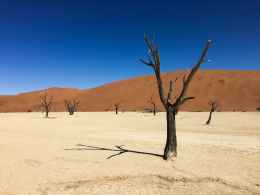There were huge clumps of ants now, dragging bigger and bigger loads. She bent down to see what they were carrying. Something round and white. An eye. A human eye.
My homeland of Australia is justly famous for its strange mammals. However, Australia is, above all, the continent of insects. The vast, hot land is home to billions of them. Insects were, and still are, a great inspiration to me. Some were there millions of years ago and are still there, living the same way they always have. Others are facing new challenges: the threat from introduced species extends even into the insect realm. The native Australian bee has no sting (of course – where I come from, swans are black) and is up against the more aggressive European stinging bee.
Humanity is so small in the context of Australia that, although we descendants of Europeans have destroyed a lot in the last two hundred years, the insect empire largely goes on exactly as before. If the termites decide that their plans require your partly wooden house to be demolished, they send in a squad and bring it down in a few years. The human government has a specialised sub-department of experts to deal with them, but there are always billions more. And so it goes.
This kind of endless war of the new arrivals against the primordial masters was and still is inspiring to me. Thousands of the termites’ amazing air-conditioned nests that can reach three metres in height stretch to the horizon, all facing north to create the coolest temperature inside. Like all social insects, the organisation of the termite empire is complex and intriguing. However, I used to find them too creepy to pay a lot of attention to up close.
My preferred insects were ants, who have been fighting the termites on and under the ground for millions of years. In the resulting arms race, both sides have developed specialised warriors with massive pincers and shielding designed to combat their opposite numbers.
Ants of course have very sophisticated social structures. One notable exception used to fascinate me. And not only me – it was mentioned two hundred years ago by the German philosopher Schopenhauer as an example of the drive and destruction of the “will to live”. I am talking about the formidable bull ant. It forages alone and has enormous pincers and a poisonous sting that is extremely painful to humans.
Her strong pincer jaws gripped. She clung harder and swung her abdomen under her body and then thrust forward, driving her sting and her venom.
I used to closely observe ants and make up stories about them – keeping away from the bull ant. In the ant world as I conceived it then, one nest might declare war on another, friends might find themselves separated by the fighting, and much more. I also liked to imagine the diplomatic relations between different species of ants, the journeys that groups went on between one nest and another. All of this offered food for imagining heroism. And horror.
First published on Jeremy Szal’s Galaxy Blog
Artwork by Eric Nyquist
Quotations from Children of the Different
Like my Facebook page
Join my newsletter list


